Tomatoes have to be top on the list for anyone starting a vegetable garden. They can be grown almost anywhere and come in various sizes, shapes, and colors. Big tomatoes make the best sandwiches and are perfect for canning! But did you know you can grow big tomatoes in pots?
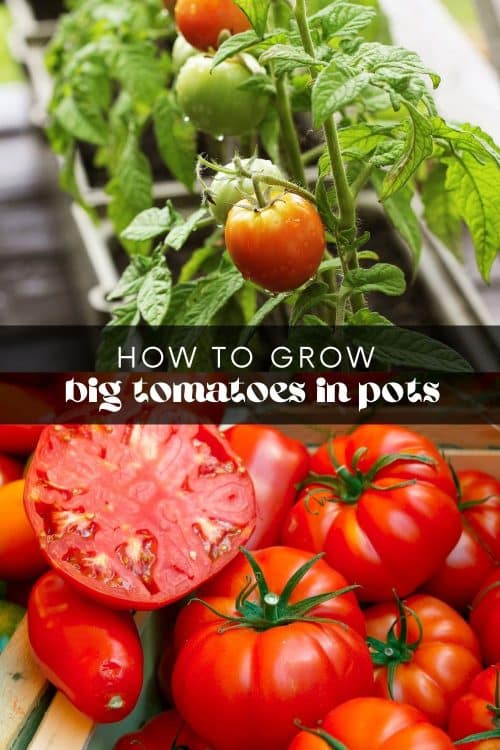
Yes, that’s right! You can grow delicious and healthy big tomatoes in pots with the right techniques and care. Let’s take a look at how you can do that.
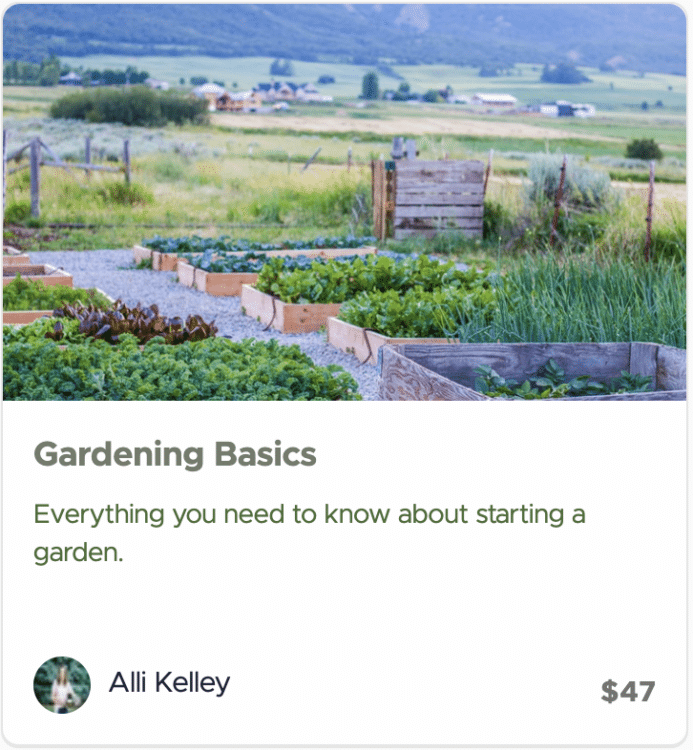
Want to start a garden but aren’t sure where to start?
Let me walk you through all the gardening details so you can get growing now!
I’ve poured my agricultural expertise and passion for gardening into a comprehensive course designed just for you! From choosing the right plot to harvesting your own produce, I’ll guide you through every step with practical, easy-to-understand advice.
Choosing the Right Tomato Variety
The first step to growing big tomatoes is to choose the right variety. Tomatoes come in two main types: determinate and indeterminate.
Here’s what you need to know:
- Determinate tomatoes: These are compact and bushy plants. They grow to a certain height and then stop. Determinate varieties produce most of their fruit at once and then stop.
- Indeterminate tomatoes: Choose this type if you want a continuous supply of tomatoes throughout the growing season. Indeterminate tomatoes keep growing and producing fruit until frost kills them.
But we want lots of big tomatoes, so we’ll focus on indeterminate varieties for this guide. Some of the most popular big indeterminate tomatoes include:
- Beefsteak
- Brandywine
- Big Boy
- Caspian Pink
How to Choose The Best Pot for Big Tomatoes
When it comes to pots for big tomatoes, the size of the pot matters! Your pot should be at least 18 inches in diameter and have a depth of about 24 inches. This will give your tomato plant enough space for its root system to grow and support the heavy fruits.
Good drainage also matters. Choose a pot with multiple drainage holes at the bottom of the pot so excess water can drain out.
As for the material the larger pot is made from, it doesn’t really matter as long as it’s sturdy. Beefsteak tomatoes, for example, can grow as tall as six feet. Your pot should be able to hold the weight of the plant. Just note soil in clay pots can dry out faster than in plastic pots. This doesn’t mean clay pots are a bad option; you’ll just have to keep an eye on the soil moisture.
When Should You Plant Big Tomatoes?
As with any plant, the timing of when to plant big tomatoes depends on your location and climate. The variety you choose may also affect the planting time.
In general, you can sow tomato seeds indoors from early spring, February to mid-March. You can then transplant them into pots and move them outdoors after the last frost.
What Are The Best Growing Conditions for Big Tomatoes?
The beauty of growing big tomatoes in pots is how you can control the growing conditions. Consider the following points before starting:
Soil
Use good-quality potting soil that is well-draining and rich in nutrients. A light and airy mix with peat moss is also a good idea. As for the soil pH, 6.0-7.0 is best for tomatoes.
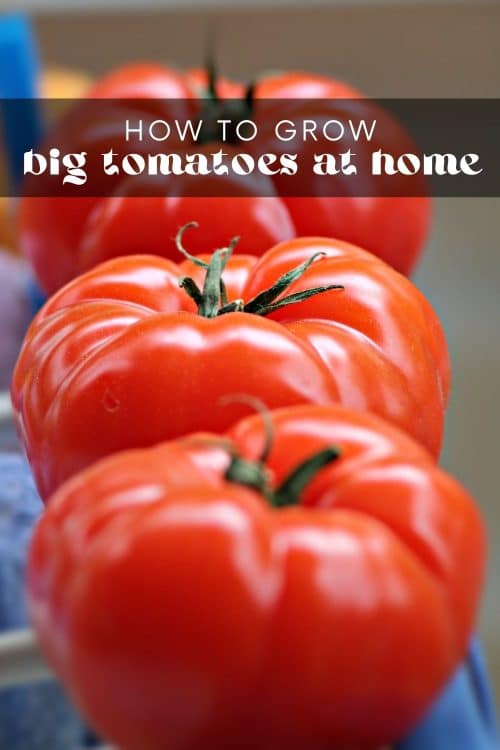
Sunlight
Tomatoes need at least 6-8 hours of direct sunlight every day to thrive. Place your pot somewhere with lots of full sun. However, too much heat can cause the fruit to ripen unevenly, so some shade during the hottest part of the day is advisable. This is especially important if you live somewhere with very hot summers.
Location
While sunlight plays a big role, the location of your pot is also important. Lots of people grow big tomatoes in greenhouses with great success. However, if the conditions are right, you can also grow them on your balcony or patio.
Temperature
Big tomatoes prefer warm temperatures, around 70-80°F (21-26°C) during the day and no cooler than 55°F (13°C) at night. Growing them in a greenhouse or polytunnel is best if you live somewhere with cooler summers. Temperatures over 85°F (29°C) can cause the plant to drop blossoms or stop producing fruit. Some tomato varieties are more cold or heat-tolerant than others, so choose accordingly.
How to Grow Big Tomatoes in Pots
Before you begin, decide if you want to grow your big tomatoes from seed or buy seedlings. Starting from seed can be a longer process, but you can pick any variety you want.
Here is how to grow big tomatoes in pots:
- If germinating from seed, start them indoors 4-6 weeks before your last frost date. Fill a tray with seed starting mix and plant 1-2 seeds per cell.
- Keep the soil in a warm, sunny spot. Temperatures between 70-80°F (21-26°C) are ideal for germination.
- Germination should happen within 7-14 days. Once they have sprouted, keep them under a grow light or next to a sunny window. Water when the soil feels dry to avoid root rot.
- Once the seedlings have grown their second set of leaves, transplant them into individual pots with potting mix. Bury them deep to encourage a strong root system. This is also how you would start with a tomato seedling purchased from a nursery.
- If moving the pot outside, harden off the young plants by gradually exposing them to outdoor conditions over a week. This is to avoid shock from sudden temperature changes.
5 Tips for Growing Big Tomatoes in Pots
Aside from picking the right pot and location, these tips can help you grow big tomatoes in pots:
- Water Consistently
Any fruit-bearing plant needs proper watering to produce a good crop. Check your pot daily and water whenever the top inch of soil feels dry. Remember, tomatoes grown in pots will need more frequent watering than those grown in the ground. This is due to the pot’s drainage holes and the limited amount of soil.
- Add a Support
The weight of tomato plants and their fruit can cause them to topple over, especially when grown in pots. Adding a support such as a stake or tomato cages can stop this. They also help the main stem to grow upright, giving it better access to sunlight and air circulation.
- Fertilize Regularly
Tomato plants will benefit from regular fertilizing as they are heavy feeders. Use a balanced, water-soluble fertilizer once every 2 weeks to keep them happy! You can also use a slow-release fertilizer when planting to provide nutrients gradually.
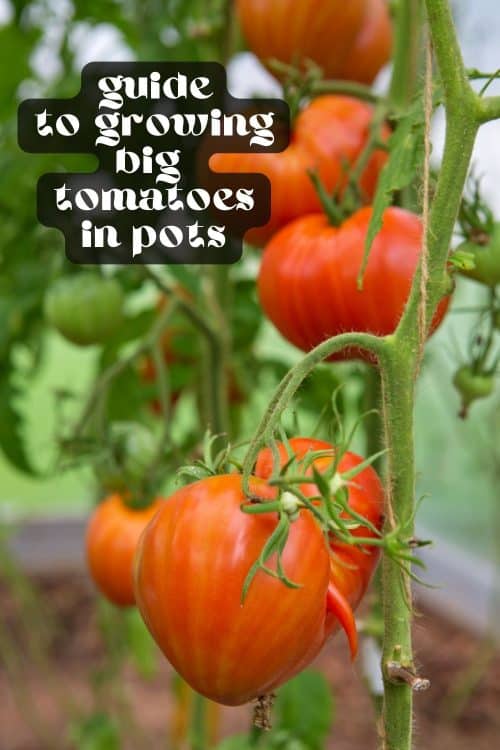
- Add Some Mulch
Once you’ve transplanted your seedlings, add a layer of mulch around the base of the plant. This can help retain moisture and keep weeds at bay. Mulch can include straw, leaves, or bark and should be about 1 inch thick.
- Prune and Pinch
Pruning and pinching off suckers (small side shoots) on your tomato plants can promote healthy growth. This helps the plant focus its energy on producing larger, healthier tomatoes instead of using it on unnecessary growth. You should only prune indeterminate varieties of tomato.

Want to start a garden but aren’t sure where to start?
Let me walk you through all the gardening details so you can get growing now!
I’ve poured my agricultural expertise and passion for gardening into a comprehensive course designed just for you! From choosing the right plot to harvesting your own produce, I’ll guide you through every step with practical, easy-to-understand advice.
How to Harvest Big Tomatoes
Most tomatoes turn red when ripe, but this varies depending on the variety. Check the recommended harvest time for your specific type of tomato so you don’t pick them too early or late. You can also tell if they’re ripe by gently squeezing them – they should give slightly.
Once they’re ready, simply twist and pull the tomato off the vine. Don’t yank or tug on them, as this can damage both the fruit and the plant!
How to Store Big Tomatoes
While you might be tempted to throw them in the fridge, this is not the best place. Big tomatoes store best at room temperature. You should try and use them quickly after harvest, as they’ll be at their best for just a few days.
If you have a lot of tomatoes, you can cook them down and freeze them for later use. Tomatoes frozen whole or chopped would work for cooked dishes only. They’ll be very mushy once they defrost – perfect for soups, stews, and sauces!
How to Use Big Tomatoes
Whether you grow them yourself or buy them from the store, big tomatoes are incredibly versatile. Try them in these tasty dishes:
- Bruschetta Caprese
- Homemade tomato soup
- Taco casserole
- Pasta Primavera
- Dutch oven chili
- Meatball casserole
Homegrown tomatoes will also make an amazing salsa or marinara sauce. Or you could just slice them up and add them to salads and sandwiches!
You can! Just keep in mind how big these plants can grow. Small spaces might not be suitable for growing big tomato plants. If you plan on growing them indoors, choose a large container and ensure it gets plenty of sunlight.
Cracking usually happens when the fruit receives too much water after a dry spell. Make sure to water consistently to avoid this issue.
First, you have to choose a big tomato type! Then, give your plants plenty of space to grow, provide consistent watering and fertilizing, and support the stems with stakes or cages. Big tomatoes require care and attention, but the payoff is worth it.
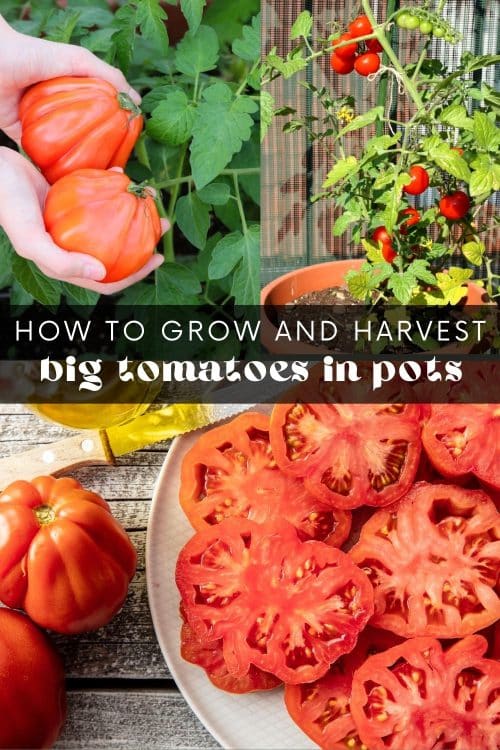
Check out these Gardening Posts:
- DIY Tall Planter Box
- DIY Self-Watering Window Boxes
- When to Plant?
- How to Set Up a Garden Drip System
- Gardening Tips for Beginners
- Winter Squash Storage
- Tips for Growing Herbs Indoors
- Building Raised Wooden Planter Boxes
- Starting Plants from Seed Indoors
- How to Make Hummingbird Food
- How Long Do Potatoes Take to Grow?
- How to Grow and Harvest Lettuce
- The 5 Best Soil Moisture Meters
- How to Grow Jalapenos
- How to Grow Green Onions
- How to Grow Big Tomatoes in Pots
- How to Grow Broccoli
- How to Grow a Corn Plant

Want to start a garden but aren’t sure where to start?
Let me walk you through all the gardening details so you can get growing now!
I’ve poured my agricultural expertise and passion for gardening into a comprehensive course designed just for you! From choosing the right plot to harvesting your own produce, I’ll guide you through every step with practical, easy-to-understand advice.
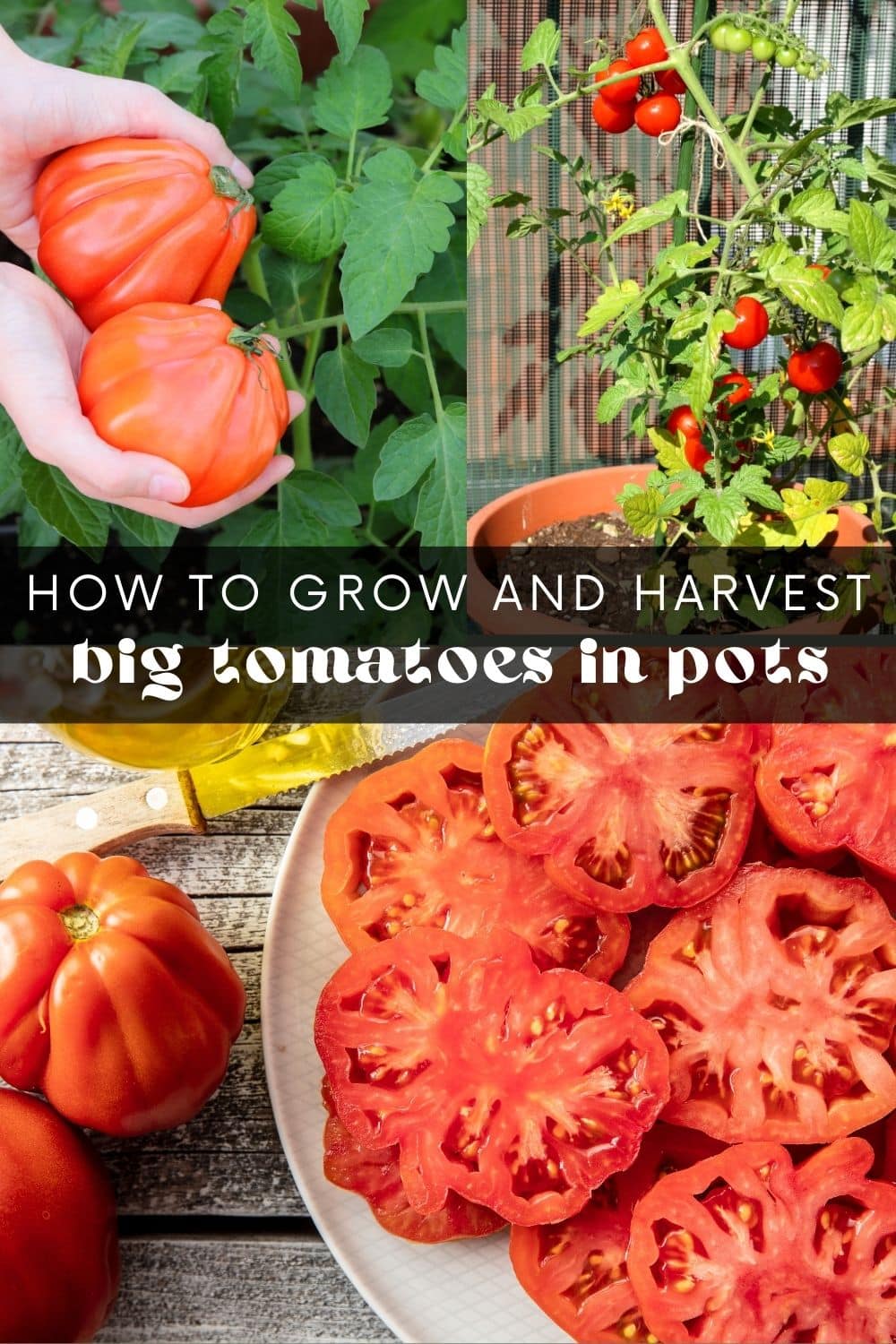
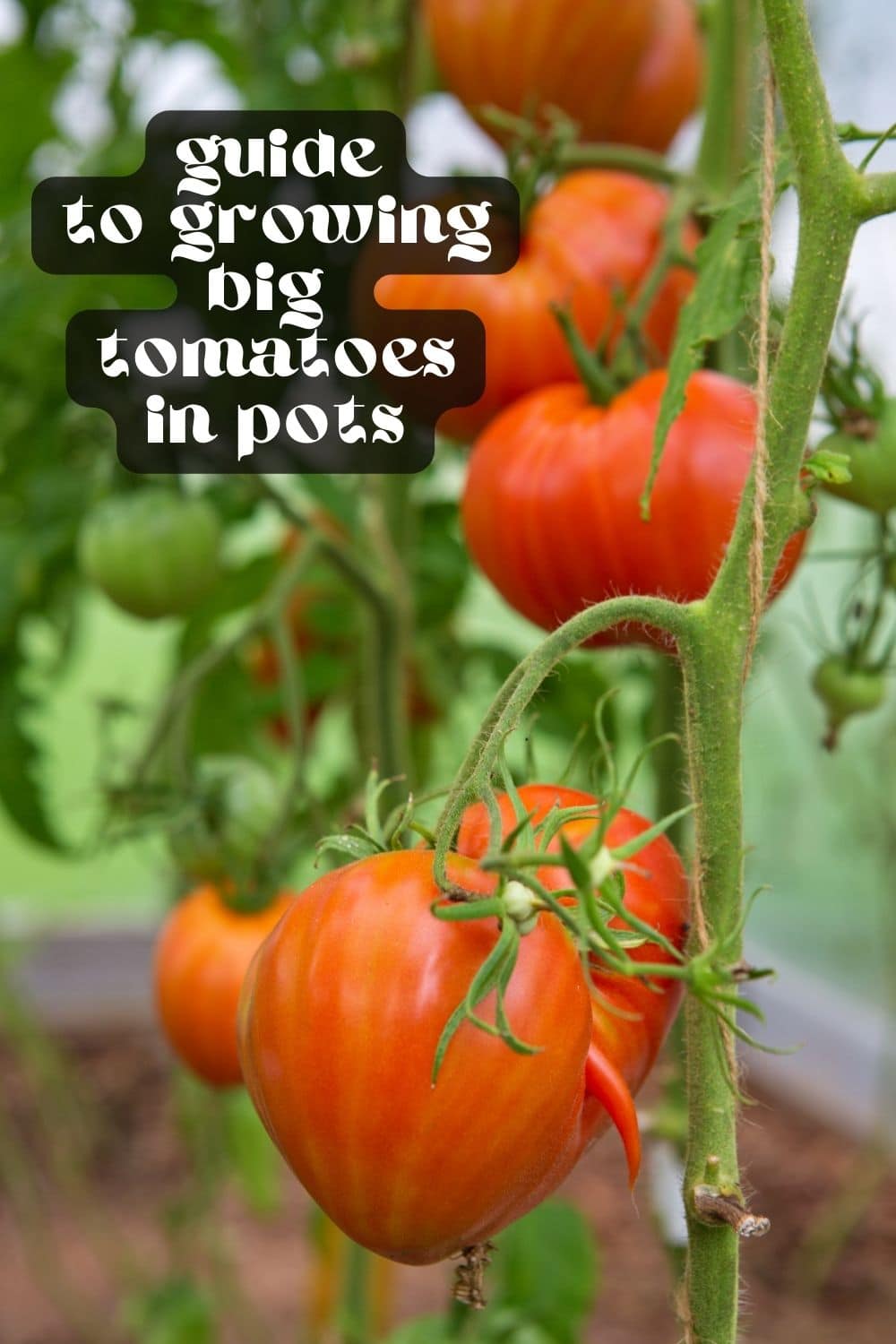
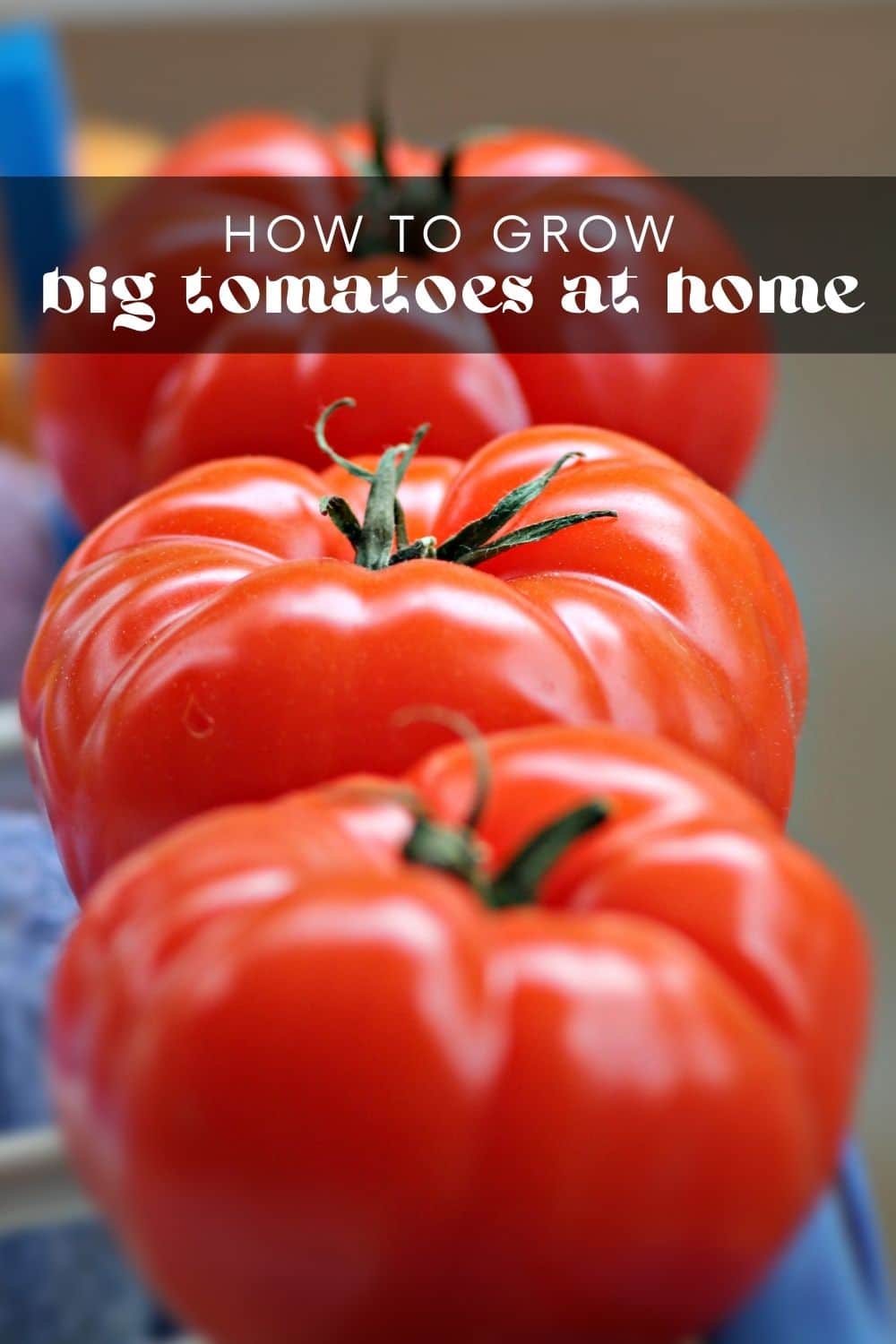
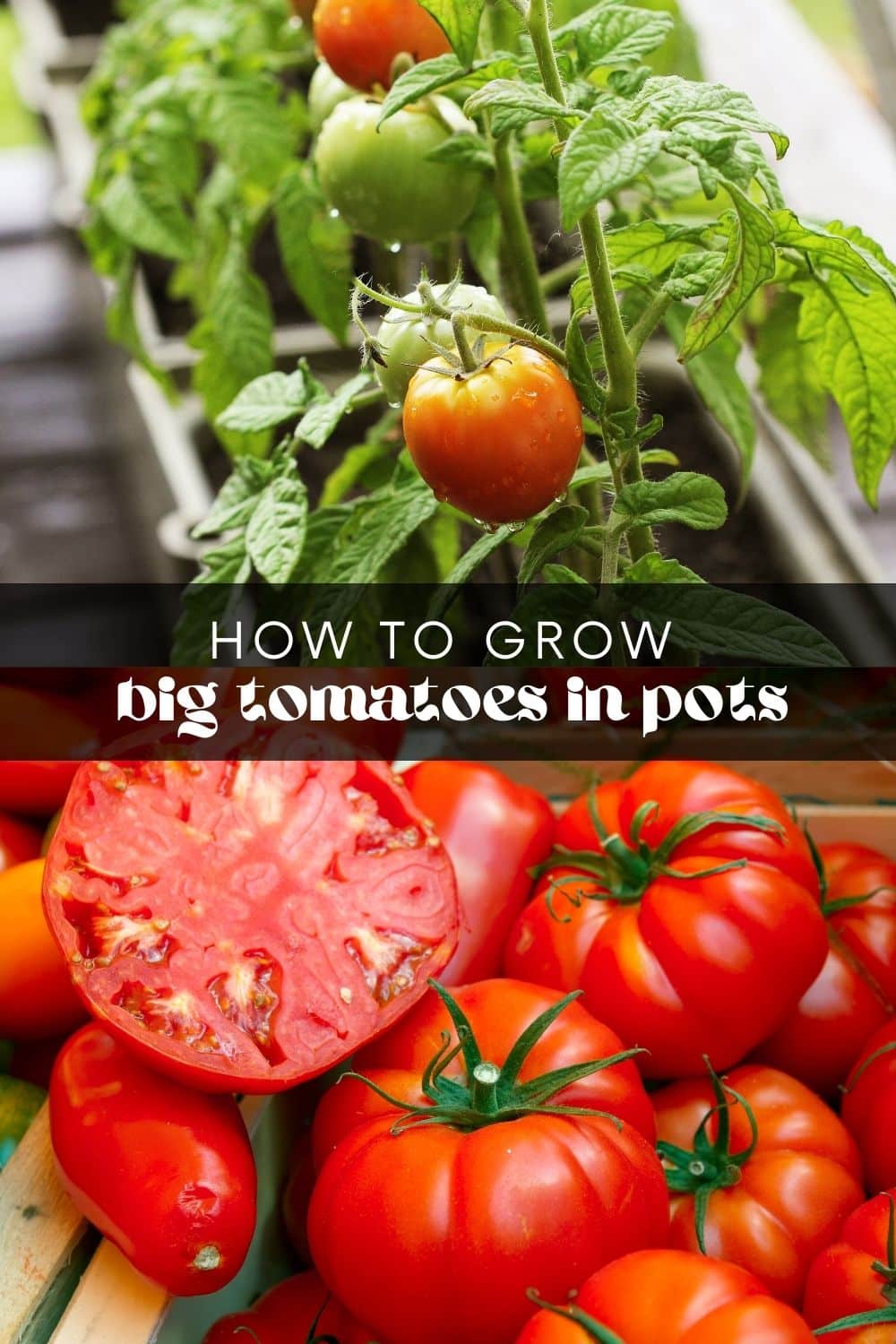





[…] your chosen container will entirely depend on which tomato variety you’re planting. You can grow big tomatoes in pots, but they’ll need more space to grow. You can always repot your tomato plant into larger […]